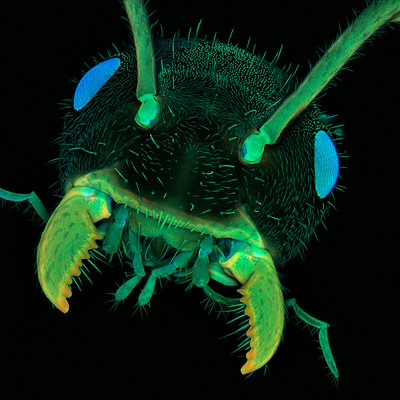
Earlier this month, we had the privilege to see magnificent pictures of our universe that were taken by the new James Webb Space telescope. For the first time we were treated to pictures of a region of the Carina Nebula where young stars are forming. We also saw Stephan’s Quintet, a cluster of five galaxies that you are probably familiar with if you have watched the movie, “It’s a Wonderful Life.” This updated picture, constructed from ~1,000 separate images, provides new information about interactions between galaxies that may have been important for the creation of the early universe. Pictures of the Southern Ring Nebula, a planetary nebula approximately 25,000 light-years from Earth, provide a first look at the clouds of gas and dust that radiate from dying stars. Images like this one will provide new understanding of the chemical molecules that are present in nebulae.
I don’t know about you, but for me these images of deep space spark a profound sense of awe and wonder that point me to God. They elicit “the feeling of being in the presence of something vast that transcends my understanding of the world”1, and they lead me to acknowledge my own limitations2.

… for through him God created everything in the heavenly realms and on earth. He made the things we can see and the things we can’t see … (Colossians 1:16, NLT)
Thomas Carlyle, a Scottish philosopher and essayist, is credited with saying that wonder [and awe] are the basis of worship, and that has certainly been my experience during my career as a research scientist. Not only do I experience wonder and awe by looking at, and contemplating, pictures of stars and galaxies from the Hubble and Webb space telescopes, but I also experience awe and wonder when I consider much smaller things like ants, pollen grains, amoebas, diatoms, and mitochondria. In fact, in my experience, there is just as much awe to be found through a microscope as a telescope.
Two of my favorite sources of microscopic awe are the annual Small World photomicrography and Small World in Motion3 competitions that showcase the work of pictomicrographers who capture what they see in the microscope in photographs and videos. A few of my favorites are a picture of the head of a 5 day old zebra fish by Dr. Hideo Otsuna who used special fluorescent dyes and a confocal microscope to capture its brain and nervous system. Other favorites are capture the spiral vessels of a banana plant stem and a cross-section of a grape. Or course, anyone who knows me, or has followed my writing for even a few posts, has probably noticed my inordinate fondness for insects. There are many excellent photomicrographs of insects including fleas, wasps, ants, flies, mosquitoes, and beetles. There are also images of the scales on moth wings, and closeups of insect eyes and mosquito antennae.

“… what in nature cannot now remind us of Christ? What in nature cannot be a vessel for our prayer, for our worship?” (Julie Canlis from A Theology of the Ordinary4)
As Dr. Jennifer Wiseman said in a talk given to the current Sinai and Synapses Fellows, “we live in an incredible universe that inspires wonder and awe, and technology gives us tools to explore it. Telescopes [and microscopes both] allow us to look at things with different kinds of eyes.” Unfortunately, licensing rights and restrictions limit my ability to share many of the microscopic wonders captured by through microscopes. But I hope you will take some time to explore the microscopic wonders of Creation and be moved to worship.
- Paul Piff and Dacher Keltner, “Why do we experience awe?” New York Times opinion, May 22, 2015.
- From Why Science and Faith Need Each Other. Elaine Howard Ecklund. Brazos Press. 2020
- My appreciation of Nikon’s Small Wonders competition was not compensated in anyway by Nikon.
- From A Theology of the Ordinary. Julie Canlis. Godspeed Press. 2017.
Dr. Julie A. Reynolds is a Research Scientist at The Ohio State University in the department of Evolution, Ecology, and Organismal Biology. She studies insect physiology and biochemistry with the goal of learning how animals adapt to extreme environments and survive changes in climate. In addition to writing for the Emerging Scholars Network, she is actively engages in discussions about science and faith as a Sinai and Synapses Fellow.

I enjoyed your article. Infinitely small and Infinitely large only seen in an Infinite mind. We can see part of it.